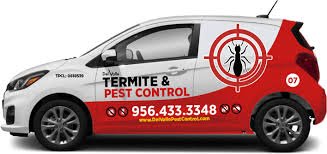Termites are among the most destructive pests a homeowner can face. Often referred to as “silent destroyers,” termites can chew through wood, flooring, and even wallpaper undetected. By the time damage is visible, the infestation is often severe. That’s why timely and effective **termite control** is essential for protecting your home or business from costly structural damage.
—
**Understanding Termite Behavior**
Termites live in colonies that can number in the thousands or even millions. The most common types include **subterranean termites**, which build colonies underground and travel through mud tubes to reach food sources, and **drywood termites**, which live directly in wood. These pests consume cellulose-based materials, including wood, paper, and fabric. Their presence can compromise the integrity of wooden beams, walls, and flooring, putting entire structures at risk.
—
**Signs of a Termite Infestation**
Spotting termite activity early is critical for effective control. Common warning signs include:
* **Mud tubes** along walls, foundation slabs, or crawl spaces
* **Hollow-sounding wood** when tapped
* **Discarded wings** near doors or windows
* **Frass** (termite droppings), which resemble tiny wood pellets
* **Bubbling or cracked paint**, often mistaken for water damage
If you notice any of these indicators, it’s important to contact a professional immediately for a full inspection.
—
**The Importance of Professional Termite Control**
DIY methods may provide short-term relief, but they are rarely effective for eliminating a full termite colony. Professional termite control companies use advanced tools and industry-grade treatments that target the entire colony—something store-bought solutions simply cannot do.
A licensed pest control technician will:
1. **Inspect** the property to assess the extent of the infestation
2. **Identify** the termite species involved
3. **Create a customized treatment plan** suited to the structure and infestation severity
4. **Apply treatments** using liquid termiticides, bait systems, or wood treatments
5. **Provide recommendations** for long-term prevention and monitoring
—
**Common Termite Treatment Methods**
* **Liquid Termiticides**: Applied to the soil around the foundation to create a barrier that repels or kills termites.
* **Baiting Systems**: Strategic placement of bait stations that attract termites and eliminate the colony gradually.
* **Wood Treatments**: Direct application of borate-based chemicals to wood surfaces to prevent future infestations.
Some companies offer **pre-construction treatments** to protect new buildings before termites become a threat.
—
**Prevention Tips for Homeowners**
Along with professional services, there are steps homeowners can take to reduce the risk of infestation:
* Eliminate wood-to-ground contact around the foundation
* Fix leaks and moisture problems in roofs, gutters, and plumbing
* Keep firewood and debris away from the home’s perimeter
* Ensure proper ventilation in attics and crawl spaces
* Schedule regular termite inspections, ideally once a year
—
**Conclusion**
Termites may be small, but the damage they cause is anything but. Investing in **professional termite control** is a smart move for any property owner. Early detection, expert treatment, and consistent prevention can save you from thousands of dollars in repairs and help preserve the value of your home or building. Don’t wait until it’s too late—act today to safeguard your investment.







